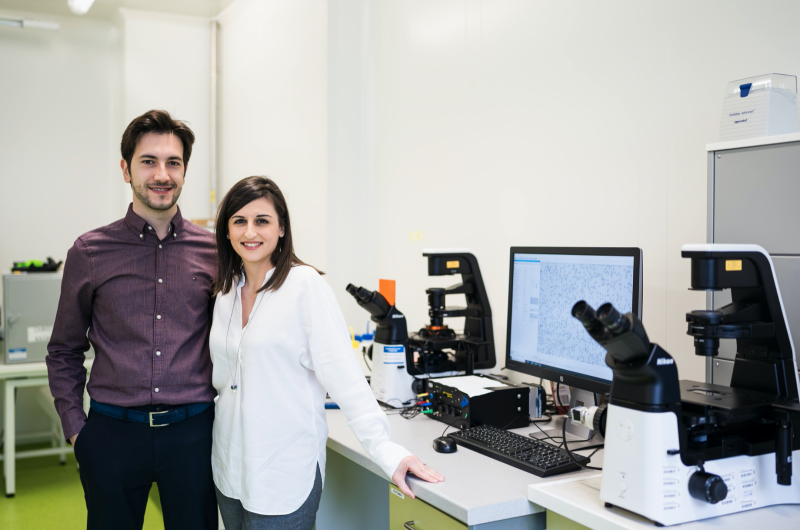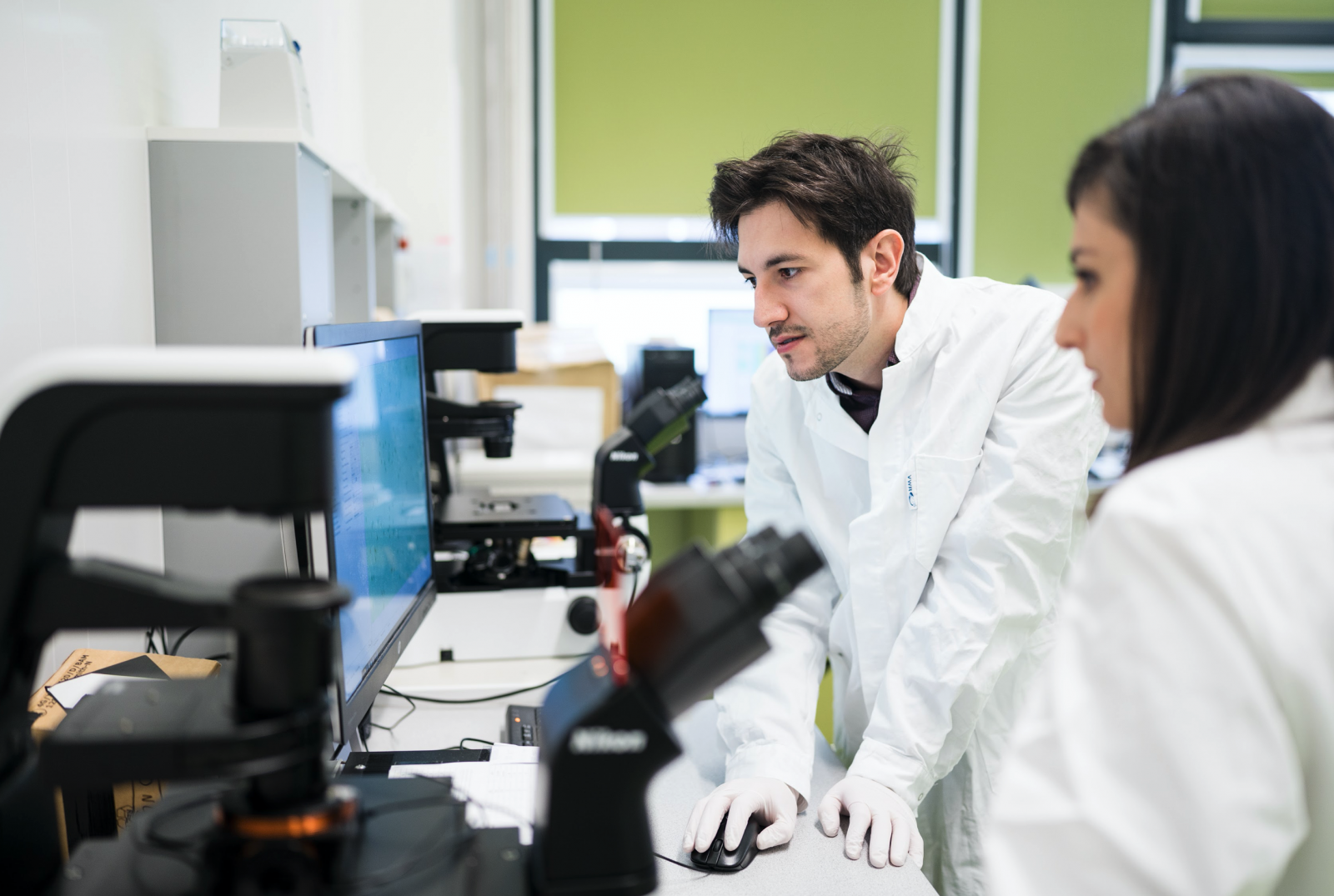Ideas and discoveries
An Italian couple from CEITEC BUT succeed with research on the capture of nanoplastics by MXene microrobots

He's in physics, she's in chemistry. Each has a different focus, yet their scientific activities have intersected. And it met with success. CEITEC (Central European Institute of Technology) BUT (Brno University of Technology) husband and wife team Martina Ussia and Mario Urso have scored with their research on trapping and detecting nanoplastics using light-powered microrobots made from revolutionary MXene materials.
Scientific brainstorming instead of celebration
“This is our greatest scientific achievement so far. It's a project that was born in the family. I've been thinking about the design of the microrobots and my wife has been thinking about their application. Then we put two things together and came up with an amazing idea,” Mario says. “Actually, we have to thank Martin Pumer, who made it possible for us to work together. In Italy we were also involved in science, but we worked in different institutes,” Martina adds with gratitude. But they say they have not celebrated their biggest success so far. As much as Martina would like to, Mario has already discussed possible follow-up avenues of research.
“It's not that we are leaving CEITEC and stop talking about work. We live by it all the time. Even when we fall asleep and someone thinks of something, we have to discuss it immediately,” Martina explains. “We can each do something different, we often have different opinions, we almost never agree, but together it just works,” adds Mario. “That's true, even a joint scientific text is not written by one person, everyone writes their part and the other person doesn't like it, they would write it differently,” Martina laughs. But they do not question each other's expertise.
Microrobots from MXene Materials
The impetus for the marriage project came from Mario. He wanted to make microrobots to capture nanoplastics using MXene, which are 2D materials that are currently receiving a lot of attention due to their excellent properties – they exhibit high conductivity, chemical stability, thermal conductivity, they are also hydrophilic, durable and compatible with the environment. Many researchers want to use these properties to produce a new generation of batteries, energy sources or hydrogen production. Mario saw the potential in their multi-layered, accordion-like structure.
“The key problem with nanoplastics is their size. They're so small they'll pass through any sieve. It's not like in the newspapers, where editors show pictures of seas or oceans polluted with plastic bags. These particles are so small that they can easily disperse further through the ocean current. They don't stay at the bottom of the oceans, essentially contaminating everything. In addition, they absorb toxic pollutants, which adds to their danger. The goal was to come up with microrobots that can capture small particles and, in addition, swim controllably in all directions. That's why I wanted to try MXene, which reminds me of a book in their structure. The nanoplastics could be trapped between the individual pages,” explains Mario. Martina managed to turn his idea into reality. “If it weren't for her competence, I would be lost,” he admits.
“When he came to me with this idea, I first addressed how to capture nanoplastics using his proposed MXene materials. I modified the materials chemically and Mario helped to make them reactive to the sun. I then thought about how to detect the number of plastic particles. Mario has knowledge of electrochemistry, so we also focused on the monitoring of nanoplastics in water. So another benefit of our work together is that when the light-driven microrobots pick up the nanoplastics, thanks to the magnetic properties and electrochemical sensors, we can collect them and pull them out,” Martina explains. “It also means that in the future we can go directly to a river or lake and see if there are nanoplastic particles there, thanks to sensors,” Mario adds.
Only in the laboratory so far
All experiments so far are limited to the laboratory. “We are trying to trap nanoplastics in small jars. We are approaching absolute capture of all nanoplastic particles in the jar. However, there are other aspects to consider with lake or sea water. It's not just micro and nanoplastics that are harmful there, there are also bacteria and various microorganisms. And we don't know how our micromachines will react to that. With this project, we have proven that MXene microrobots can help solve the nanoplastics problem, but there are still many challenges to face,” concludes Mario.
“Now, for example, we are continuing with our collaborative research by adding more difficulty. I mean the ability of microrobots to capture other pollutants besides microplastics, namely bacteria. We are therefore trying other materials and different processing techniques,” Martina suggests the next steps of the couple's project.
High Entropy Oxides: Awarded PhD student Erik Ščasnovič works on research and development of new ceramic materials
In the Footsteps of the Invisible or Electron Microscopy in Brno
Awarded student Hana Kopřivová aims to come up with a new system for diagnosing tumors
Awarded student Jiří Kabát uses an electron microscope to measure the temperature of nanoparticles
CEITEC scientist creates 3D model of a rare cave-dwelling salamander to facilitate its research